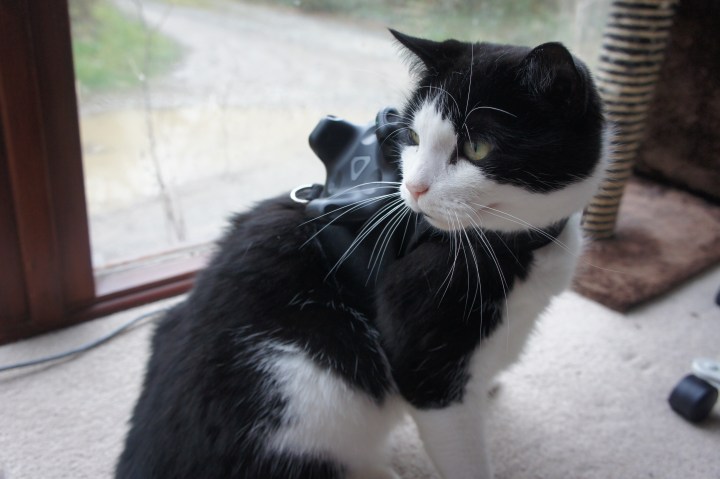
Triangular Pixels Creative Director Katie Goode described the experiment in a blog post titled “Worlds First VR Tracked Cat! Vive Tracker VR Pet Hacking.”
“The aim is to give players a warning of unpredictable pets/children when they enter the space, and the potential to of course — actually see their companion in games,” Goode wrote.
HTC recently began sending out units from its initial batch of Vive-tracking sensors, according to Tom’s Hardware. HTC showed the trackers off at the Consumer Electronics Show (CES) in January, where we noted that the light, versatile sensors give developers the ability to “turn the Vive into a giant toy box.”
Various room-scale VR systems have solutions in place already for showing a physical space’s boundaries with digital representations, like the holographic walls that can appear in HTC Vive experiences to let you know when you’re approaching walls or furniture in real life. Triangular Pixels’ system can apparently provide a similar solution for curious pets in the room, though Goode’s post also hinted that the sensors could be used to create virtual reality representations of pets as well.
Getting a pet to cooperate long enough to play a game would be a different story. “We need to make sure the device can be removed very swiftly from not-so-patient cats/dogs, and safely come off if it gets really caught — but at the same time, stay on for the average rolling around and sleeping a pet may do,” Goode wrote. “Fortunately the tracker itself is very light, so is perfect for this kind of fabric hacking.”
As you can see in the Instagram video below, combining pets and VR is not currently ideal, so best of luck to Triangular Pixels as they tackle this crucial niche.
Editors' Recommendations
- HTC aims to turn your carpool into a VR roller coaster
- Kokomo is a new social VR platform from Canon
- The future of immersive VR? ‘Chemical haptics’ applied to your skin
- The most common HTC Vive problems, and how to fix them
- Everything HTC announced at ViveCon 2021: Vive Focus 3 and Vive Pro 2


